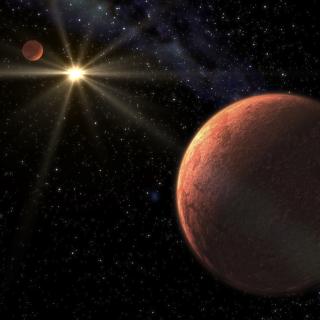Bibcode
Lodieu, N.; Deacon, N. R.; Hambly, N. C.; Boudreault, S.
Referencia bibliográfica
Monthly Notices of the Royal Astronomical Society, Volume 426, Issue 4, pp. 3403-3418.
Fecha de publicación:
11
2012
Número de citas
27
Número de citas referidas
20
Descripción
We present the results of a deep (J = 19.1 mag) infrared (ZY JHK) survey
over the full α Per open cluster extracted from the Data Release 9
of the United Kingdom Infrared Telescope Infrared Deep Sky Survey
Galactic Clusters Survey (UKIDSS). We have selected ˜700 cluster
member candidates in ˜56 square degrees in α Per by
combining photometry in five near-infrared passbands and proper motions
derived from the multiple epochs provided by the UKIDSS Galactic
Clusters Survey (GCS) Data Release 9 (DR9). We also provide revised
membership for all previously published α Per low-mass stars and
brown dwarfs recovered in GCS based on the new photometry and astrometry
provided by DR9. We find no evidence of K-band variability in members of
α Per with dispersion less than 0.06-0.09 mag. We employed two
independent but complementary methods to derive the cluster luminosity
and mass functions: a probabilistic analysis and a more standard
approach consisting of stricter astrometric and photometric cuts. We
find that the resulting luminosity and mass functions obtained from both
methods are consistent. We find that the shape of the α Per mass
function is similar to that of the Pleiades although the characteristic
mass may be higher after including higher mass data from earlier studies
(the dispersion is comparable). We conclude that the mass functions of
α Per, the Pleiades and Praesepe are best reproduced by a
log-normal representation similar to the system field mass function
although with some variation in the characteristic mass and dispersion
values. Based on observations made with the United Kingdom Infrared
Telescope, operated by the Joint Astronomy Centre on behalf of the U.K.
Particle Physics and Astronomy Research Council.
Proyectos relacionados

Estrellas de Baja Masa, Enanas Marrones y Planetas
Se investigan los procesos que conducen a la formación de estrellas de baja masa, enanas marrones y exoplanetas y caracterizar las propiedades físicas de estos astros en varias etapas evolutivas. Las estrellas de muy baja masa y las enanas marrones son probablemente los objetos más numerosos de nuestra Galaxia, pero no por ello están
Rafael
Rebolo López